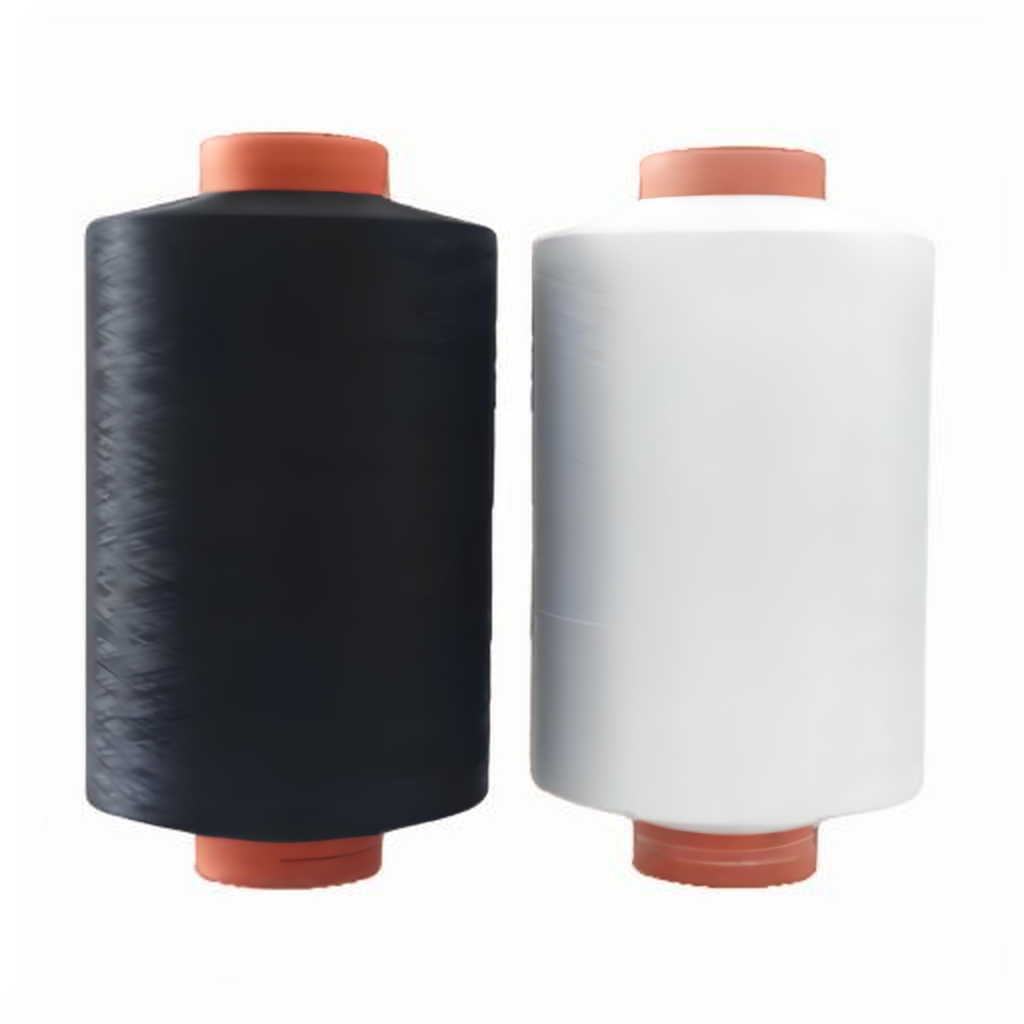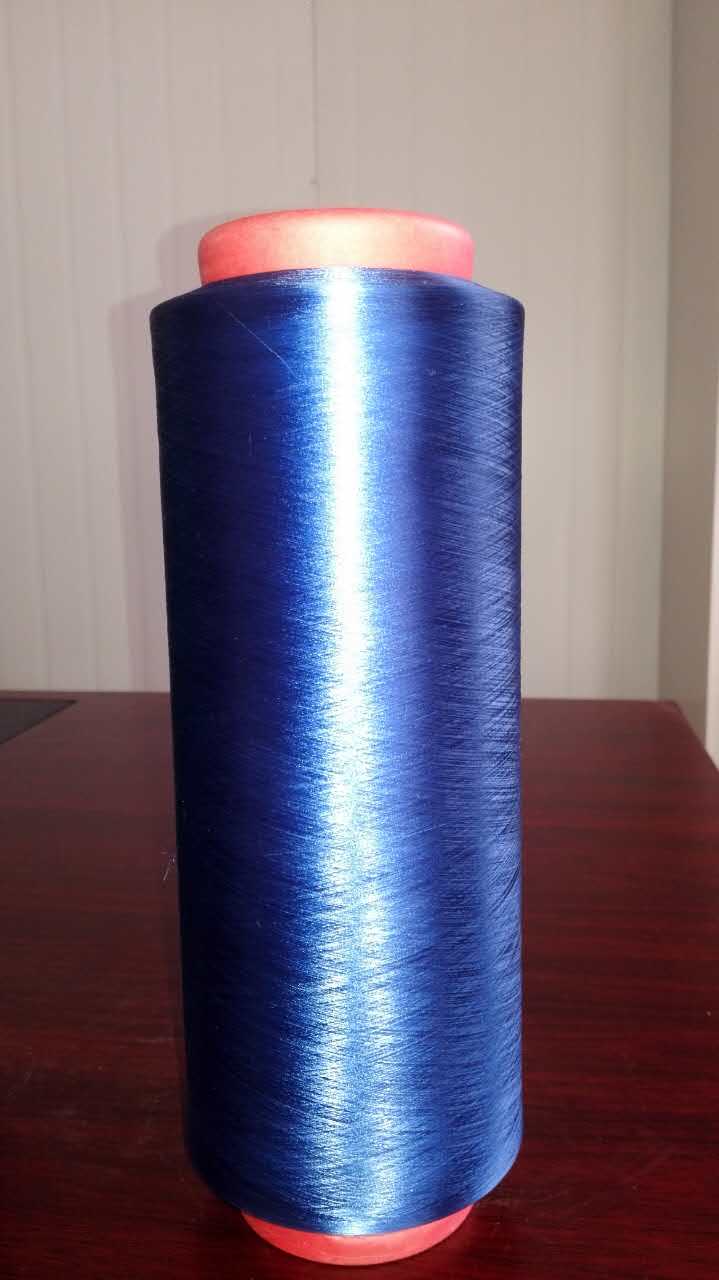product description
Increasingly utilised in the textile industry, nylon coloured yarn is a yarn that provides nylon fibre colour via dying technique. Because of its unique chemical structure, nylon fibre shows distinct dyeing process characteristics than other fibres. Knowing the dyeing properties of nylon dyed yarn not only enhances the dying quality but also maximises the manufacturing process to satisfy the market need for colour and durability.

Nylon yarn dyed fabric
What is nylon dyed yarn?
Nylon coloured yarn is yarn fashioned from nylon fibre that has been dyed. Synthetic fibre nylon, often called polyamide, has high strength and flexibility because of its amide groups in molecular structure. Usually, nylon coloured yarn is produced using phases of fibre preparation, dyeing and finishing. Because of its great hydrophilicity and strong hygroscopicity, certain dyes and dyeing techniques are often utilised in nylon fibre to guarantee the homogeneity and firmness of the dyeing result.
Usually, nylon coloured yarn is dyeing using acid, dispersion, and sulphur dyes. With the amino group in nylon fibre, these dyes may create a stable dye-fiber mix that guarantees vivid and long colours after dyeing. Nylon fibre dyeing must be done in an acidic atmosphere and at a certain temperature to aid to enhance the dye absorption and fastness. The dyeing process of nylon coloured yarn is often somewhat complex overall, therefore it is important to choose suitable dyes and process parameters depending on varied demands and application situations.
Which colours would be appropriate for yarn spun from nylon?
There are certain criteria for choosing the dyes used in nylon coloured yarn. Generally speaking, sulphur dyes, dispersion dyes, and acid dyes fit nylon fibres. Most often utilised kind of dye in nylon fibre dying are acid dyes. Under an acidic environment, they may react with amino groups in nylon to generate a stable dye-fiber mix. Bright dyeing effects and durable colours are two benefits of acid dyes that fit for dyeing requirements of different colours.
Mostly used for dying nylon are disperse colours. Their tiny size and ability to get into the core of nylon fibres help to provide a consistent dying effect. High-density nylon textiles are often dyed using disperse colours, which also help to retain colour stability at high temperatures. Some unique nylon fibres can be dyed using sulphur dyes; their dyeing method requires high temperatures and a reducing atmosphere. Although sulphur dyes may provide excellent colour intensity, the dyeing process requires tight control criteria.
At high temperatures, what performance does nylon dyed yarn exhibit?
Though their dyeing performance at high temperatures still has to be carefully regulated, nylon fibres offer excellent high temperature tolerance. To guarantee that the dye can completely permeate the nylon fibre and provide a consistent dyeing result, the dyeing process of nylon fibres usually need to be conducted at a higher temperature. The dye bonds more tightly to the nylon fibre at high temperatures, therefore enhancing the colour fastness and durability of the dying.
High-temperature dyeing might, however, potentially bring some drawbacks like unequal colour and heat deformation of nylon fibres. Too high temperatures during the dyeing process might modify the structure of nylon fibres, therefore influencing the dyeing outcome. Thus, in real production, it is essential to choose suitable temperature and duration depending on various dyes and dyeing needs to prevent the negative consequences of excessive temperature on the dyeing result. By varying the dyeing temperature and time, one may significantly raise the stability and quality of nylon coloured yarn.
nylon coloured yarn’s application areas
Because of its great performance and general adaptability, nylon coloured yarn finds extensive usage in many different sectors. Sportswear, outdoor gear, swimwear, etc. in the garment sector is made from nylon coloured yarn most of the time These clothes need to be colourful and long-lasting simultaneously and have high wear resistance and flexibility. Nylon coloured yarn offers a high-quality wearing experience and visual impacts as well as fulfilling criteria.
Furniture textiles, curtains, and carpets in the house furnishing industry are produced from nylon coloured yarn. These goods must be regularly used and washed, hence the fibre has great needs for wear resistance and colour fastness. Excellent durability and consistent colour performance of nylon dyed yarn have made it the perfect option for this industry. Furthermore extensively employed in industrial sectors like making engineering textiles and work clothing is nylon coloured yarn. To fit different demanding usage conditions, these goods must be very strong and durable.
How would one raise the nylon coloured yarn’s dyeing uniformity?
The quality of the resultant product depends on the dyeing uniformity of nylon coloured yarn. Several elements must be under control throughout the manufacturing process if consistency of dyeing is to be raised. Pretreatment is first very important to guarantee consistent dying. Complete cleaning and pretreating the nylon fibre removes contaminants and oil, therefore enabling the dye to permeate the fibre uniformly. Second, dyeing consistency is much influenced by the method of dying as well. For instance, the dye absorption and uniformity may be enhanced by using proper dyes and dyeing temperature.
Furthermore very important in the dying process is the consistency of stirring and circulation. Good stirring and circulation helps to guarantee complete dye dispersion in the dyeing liquid, thereby enhancing the dyeing uniformity. Advanced dyeing equipment like homogeneous dyeing tanks and high-pressure dyeing machines may be employed to guarantee consistency and stability throughout the dyeing process in mass production. Usually, by maximising pretreatment, process control, and equipment choice, the dyeing uniformity of nylon coloured yarn can be quite raised.

Nylon hank dyed textured yarn
An essential textile component, nylon coloured yarn’s dyeing properties are rather crucial for textile manufacture. Actual production and application may be better directed by knowing the fundamental ideas of nylon dyed yarn, relevant dyes, dyeing performance at high temperature, application areas, and techniques for enhancing dyeing uniformity. Not only does nylon dyed yarn exhibit a great spectrum of application possibilities in industry, household goods, and clothes, but the optimisation of its dyeing process also guarantees the improvement of product quality and satisfying of market demand. The dyeing properties of nylon dyed yarn will keep becoming better as technology develops and dyeing quality criteria become better, thereby adding more value to the growth of the textile sector.
Feature Product
-
 DTY 100D/144F Polyester Yarn
DTY 100D/144F Polyester YarnDTY 100D/144F Polyester Yarn: The Ultimate Guid...
-
 DTY 100D/96F Polyester Yarn
DTY 100D/96F Polyester YarnDTY 100D/96F Polyester Yarn: The Soft, Stable S...
-
 DTY 75D/144F SIM Polyester Yarn
DTY 75D/144F SIM Polyester YarnDTY 75D/144F SIM Polyester Yarn: A Top Choice f...


